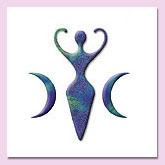 Margaret Murray was right: Part II
Margaret Murray was right: Part II
The North Pole prior to about 12,000 years ago was
somewhere in todays northern United States, probably where the Great Lakes are
today. This sudden plate shift not only “pushed” the North Pole up from its
present position from the viewpoint of North America; but it also “pulled” the
Eurasian land mass up to the Arctic Circle. This is why, for example, so many
perfectly preserved mammoths have been discovered. The northernmost stretches
of Europe and Asia had very mild climates prior to this dramatic plate shift.
It should also be noted that this sudden pole-shift caused a massive global
flood as the poles were suddenly in much warmer weather. This explains why so
many ruins of ancient cities now lay on the bottom of the oceans.
Prior to this plate-shift, the three sub-races---of which
later became the Indo-European people---were geographically separated. It’s
important to note that natives of the Far East, the Indian subcontinent, and
true-Semites (based in the southern Saudi peninsula), didn’t live in Europe,
North Africa, or most of Asia (including the Near and Middle East). Also,
Turko-Mongolian racial types had not come to be as of yet. The Earth’s
population was smaller than what we can imagine by todays standards.
The sub-race which I refer to as the
“true-Mediterraneans” (not Semitic, or even necessarily what we call
“Mediterranean” today) lived in the Near and Middle East; and founded the first
post-flood civilizations. The sub-race which I refer to as the
“proto-Germanics” (these were pure Germanics, not the largely Alpine-Germanic
people whom we call “Germanic” today) lived north of the Himalayas up to the
northern Eurasian coast. The sub-race which I refer to as “proto-Europeans” or
“Alpines” lived in Europe, and probably well east of it in some places, and in
parts of North Africa.
The spiritual culture of these proto-Europeans was the progenitor of Margaret
Murray’s “Witch-cult.” All of the evidence points to it so clearly. The ancient
stag god and the moon goddess. So many common themes. As small bands of
proto-Germanic people migrated westward across central Europe thousands of
years ago, they merged with these natives to form the “Celtic” cultures, and
their spiritual traditions merged to form new ones. However, the “Witch-cult”
always seemed to stick around as a separate tradition. When true-Mediterraneans
migrated westward across Southern Europe and North Africa, and then northward
along the Atlantic coast and into the British Isles, the same dynamic occurred.
They merged with the natives, and their respective spiritual traditions merged
as well; and yes, the ancient “Witch-cult” continued to exist separately. In
fact, in many parts of both northern and southern Europe, “Alpine” tribes
coexisted with the newer cultures that were much greater in number.
 At some later point, approximately four to five thousand
years ago, a large final migration of proto-Germanic people poured into Europe
and overran Scandinavia and a large part of central Europe. I would theorize
that they may have largely bypassed Eastern Europe, which then remained of the
more native stock. Unlike the two prior migratory patterns into Europe,
Germanic language, culture, and spirituality were much more dominant in these
newly acquired territories. Yet still, the “Witch-cult” continued to exist even
within these new Odinic cultures.
At some later point, approximately four to five thousand
years ago, a large final migration of proto-Germanic people poured into Europe
and overran Scandinavia and a large part of central Europe. I would theorize
that they may have largely bypassed Eastern Europe, which then remained of the
more native stock. Unlike the two prior migratory patterns into Europe,
Germanic language, culture, and spirituality were much more dominant in these
newly acquired territories. Yet still, the “Witch-cult” continued to exist even
within these new Odinic cultures.
One well-documented example of this transformation from
“Witch-cult” to other pagan traditions was in ancient Greece. When ancient
Hellenic religion became dominant in Greece, the government declared that the
“Old Religion” didn’t qualify as a religion at all. Although some may consider
Christianity as the source of the deconstruction of the “Witch-cult,” it
actually started long before that. It’s clear that the tradition of the moon
goddess Hecate, and the Dianic tradition, existed long before Greece and Rome
rose to prominence. Many names, same goddess.
Virtually all of the various spiritual “reconstructionist”
groups do not lay claim to the scores of ancient stone megaliths, like Stonehenge,
and rather attribute them to some earlier culture. Could that “earlier culture”
have been this proto-European people, their culture, and maybe their spiritual
tradition as well? Since so little is known about most of these massive stone
structures, we may never know the exact truth; but it seems to me that this is
a probability.
The Basques, the Welsh, and even the Camunians, are---at
least partly---modern survivals of this ancient European type; particularly the
Basques. Recent DNA studies have revealed that many English types have more
genetic connection to this very ancient stock than previously thought. “Cheddar Man,” excavated in 1903, lived in southwest England over 9,000 years ago. After
his DNA was extracted, and samples of local people were compared to it in 1997,
one of this man’s direct descendants was living a half-mile away from his burial site. That’s pretty incredible since it has been over 90 centuries and about
300 generations.
This ancient---and extremely resilient---spiritual
culture, in all of its related forms, is in need of a new, more dignified name for
reference at least. A name that puts it within historical perspective, and one
that sounds better than the clumsy, disrespectful-sounding term “Witch-cult.”
Since I have gone this far, I would like to suggest a new name:
“Witcheathenry.” I would guess that most of the ancient adherents of what was
likely an open/non-occultic folk religion, were not practitioners of “magic” or
“craft.” The literal "practice of magic” was left to the high initiates.
Ancient women of renown… waiting for redemption.
.

No comments:
Post a Comment